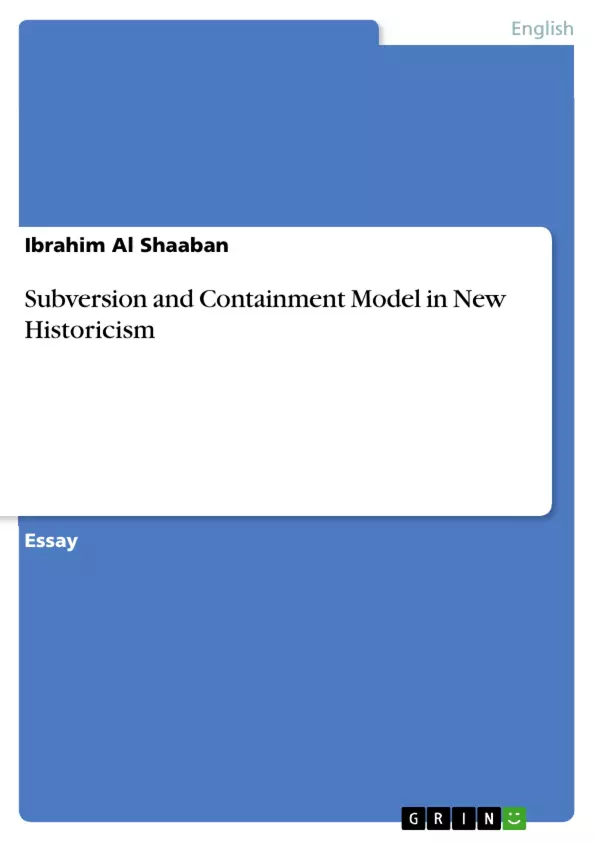This essay will discuss the development of subversion and containment theory and how it has been applied to texts and literary works. In addition, it will focus on the containment mode in Elizabethan England and how this concept has been criticized.
The broad meaning of "Subversion" is the attempt to undermine or change a political system, whereas "Containment" is the act of attempting to prevent the influence of an opposing ideological power or political system from spreading. Subversion and containment is a concept introduced by the American Shakespearean Stephen Greenblatt, the leading exponent of the New Historicism literary theory. Influenced by Foucault’s concept of power, new historicists have been preoccupied with how subversive identities as atheists and sexual deviants are contained by the power they seem to contest.
Table of Contents
- Subversion and Containment Model in New Historicism
- Invisible Bullets: Renaissance Authority and its Subversion
- Harriot's A Brief and True Report of New Found Land of Virginia (1588)
- Shakespeare's second Henriad
- The Machiavellian Hypothesis
- Criticisms of Greenblatt's Theory
- Greenblatt's Methodology and Criticisms
Objectives and Key Themes
This essay aims to analyze the concept of subversion and containment, a key framework within New Historicism, and how it applies to literary texts and historical contexts. It examines Stephen Greenblatt's theories and their applications to both historical and literary works, specifically focusing on Elizabethan England.
- Subversion and Containment as a dynamic of power.
- The interplay between authority and subversion in Elizabethan England.
- Greenblatt's use of historical texts, such as Harriot's "A Brief and True Report" and Shakespeare's plays, to illustrate his theories.
- The relationship between religion, power, and ideology in Elizabethan England.
- Criticisms of Greenblatt's methodology and interpretations.
Chapter Summaries
The essay begins by introducing the concept of subversion and containment, exploring its broader meaning in political and ideological contexts. It then examines Greenblatt's seminal work, "Invisible Bullets," highlighting his argument that power relies on and produces subversion to maintain its stability.
Greenblatt utilizes Thomas Harriot's "A Brief and True Report" as an example, showcasing how Harriot's perceived atheism, while subversive, ultimately reinforces Elizabethan authority. The essay also explores Greenblatt's analysis of Shakespeare's plays, specifically the "Henry IV" plays, demonstrating how power consolidates itself through seemingly subversive elements.
The essay further investigates Greenblatt's application of the Machiavellian Hypothesis to Harriot's observations of Algonquin Indians. It explores how Greenblatt interprets this encounter as a test of the hypothesis, highlighting the interconnectedness of power, religion, and ideology.
Finally, the essay delves into criticisms of Greenblatt's methodology and interpretations, highlighting concerns regarding the specificity of historical analysis and the accuracy of his claims.
Keywords
This essay focuses on the New Historicism literary theory, particularly the concept of subversion and containment as developed by Stephen Greenblatt. It examines the application of this theory to Elizabethan England, analyzing historical texts like Harriot's "A Brief and True Report" and Shakespeare's plays. Key themes include power, ideology, religion, and the interplay between subversion and containment. The essay also delves into the criticisms directed towards Greenblatt's methodologies and interpretations.
- Citation du texte
- Ibrahim Al Shaaban (Auteur), 2021, Subversion and Containment Model in New Historicism, Munich, GRIN Verlag, https://www.grin.com/document/1192779



